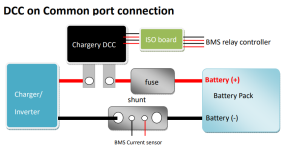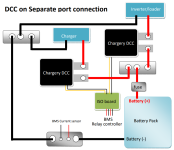jasonwang3a
1 mW
Greetings everyone,
The C10325 is not just a power supply unit, but also a charger that can operate in three modes.
Firstly, it can charge a battery in Normal Charge mode. This requires selecting the battery type, setting the cell count, charge current, end current, end voltage per cell, and others every time.
Secondly, it can charge a battery in AUTO mode. When charge parameters are set, and AUTO charge is turned on, the charger can automatically charge according to the set parameters. This is very convenient, especially when charging the same battery repeatedly.
Thirdly, it can function as a power supply unit. However, to do so, the output voltage and maximum output current must be set.
When a battery is connected to the charger, it is assumed that the intention is to charge the battery. In this case, modes one and two are appropriate. If the PSU mode is used to charge the battery, all charge parameter settings are ignored. As a result, the charger will not stop charging or display "DONE" when the battery is fully charged. This is because all PSUs do not work at CC first then CV and stop as same as charger, even when a battery is connected.
Flippy has provided an excellent explanation of the differences between a PSU and a charger.
When the charger operates in Normal Charge or AUTO charge mode, it first measures the battery voltage and compares it to the set parameters. If they don't match, the charger will not charge the battery. For example, if the battery is a 10S battery, the minimum voltage is 27.5V, and the maximum voltage is 42.0V. If the voltage reading on the charger's LCD is 45V, the charger will not charge the battery. However, some BMS systems have a charging switcher that is turned off, preventing the C10325 from obtaining the battery voltage, resulting in no charging. At this point, if PSU mode is selected, the C10325 will output according to the voltage setting. The BMS will measure the voltage and turn on the switcher, resulting in charging current flowing into the battery. Although it may appear to be charging, it is not safe.
Some chargers will output voltage when the power switch is turned on, and they can work perfectly with the aforementioned BMS systems, charging the battery directly without checking the battery voltage. However, this is not safe if the battery is over-discharged or connected to the wrong type of battery, such as a 12S charger connected to a 10S battery.
The C10325 is not just a power supply unit, but also a charger that can operate in three modes.
Firstly, it can charge a battery in Normal Charge mode. This requires selecting the battery type, setting the cell count, charge current, end current, end voltage per cell, and others every time.
Secondly, it can charge a battery in AUTO mode. When charge parameters are set, and AUTO charge is turned on, the charger can automatically charge according to the set parameters. This is very convenient, especially when charging the same battery repeatedly.
Thirdly, it can function as a power supply unit. However, to do so, the output voltage and maximum output current must be set.
When a battery is connected to the charger, it is assumed that the intention is to charge the battery. In this case, modes one and two are appropriate. If the PSU mode is used to charge the battery, all charge parameter settings are ignored. As a result, the charger will not stop charging or display "DONE" when the battery is fully charged. This is because all PSUs do not work at CC first then CV and stop as same as charger, even when a battery is connected.
Flippy has provided an excellent explanation of the differences between a PSU and a charger.
When the charger operates in Normal Charge or AUTO charge mode, it first measures the battery voltage and compares it to the set parameters. If they don't match, the charger will not charge the battery. For example, if the battery is a 10S battery, the minimum voltage is 27.5V, and the maximum voltage is 42.0V. If the voltage reading on the charger's LCD is 45V, the charger will not charge the battery. However, some BMS systems have a charging switcher that is turned off, preventing the C10325 from obtaining the battery voltage, resulting in no charging. At this point, if PSU mode is selected, the C10325 will output according to the voltage setting. The BMS will measure the voltage and turn on the switcher, resulting in charging current flowing into the battery. Although it may appear to be charging, it is not safe.
Some chargers will output voltage when the power switch is turned on, and they can work perfectly with the aforementioned BMS systems, charging the battery directly without checking the battery voltage. However, this is not safe if the battery is over-discharged or connected to the wrong type of battery, such as a 12S charger connected to a 10S battery.





